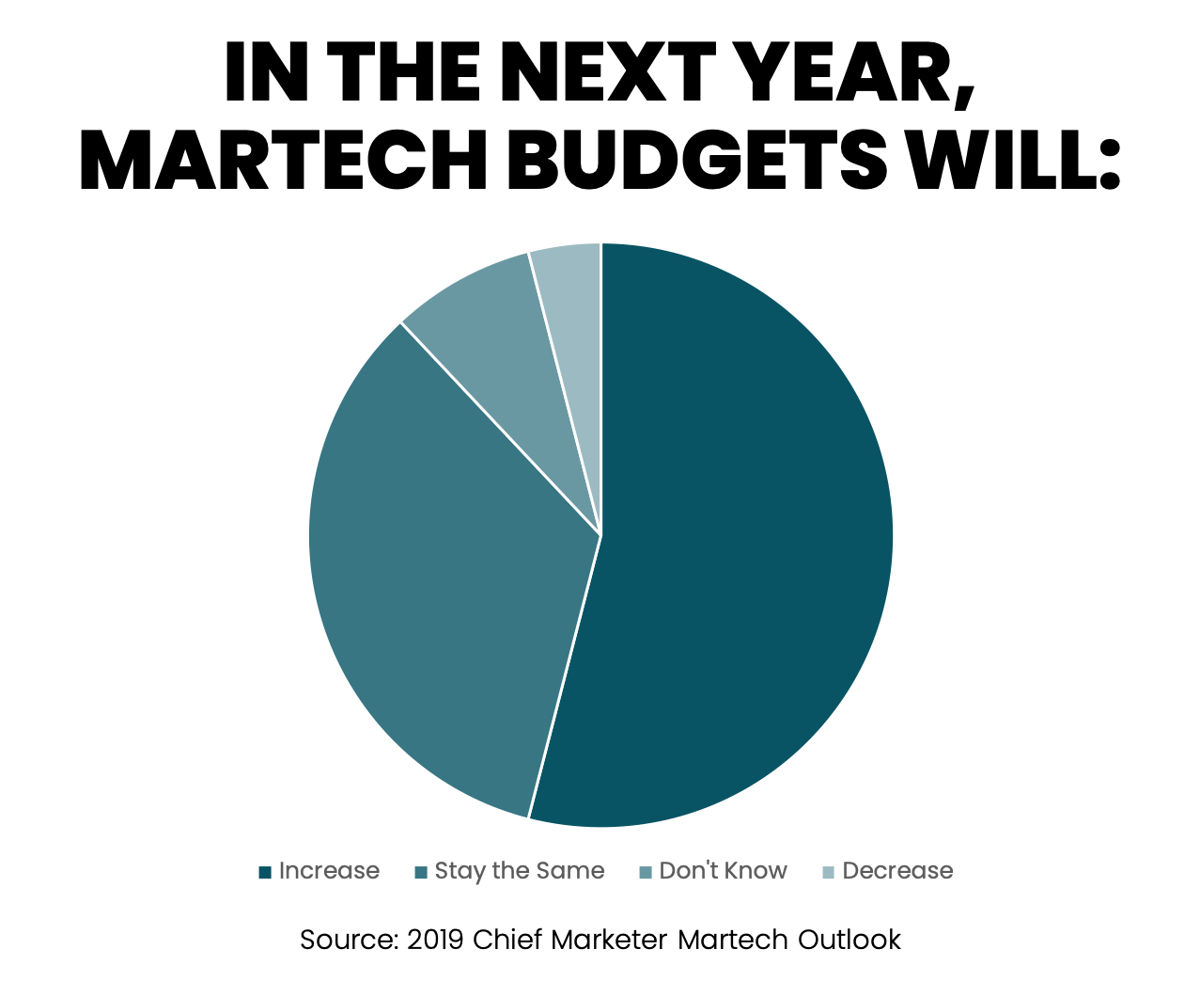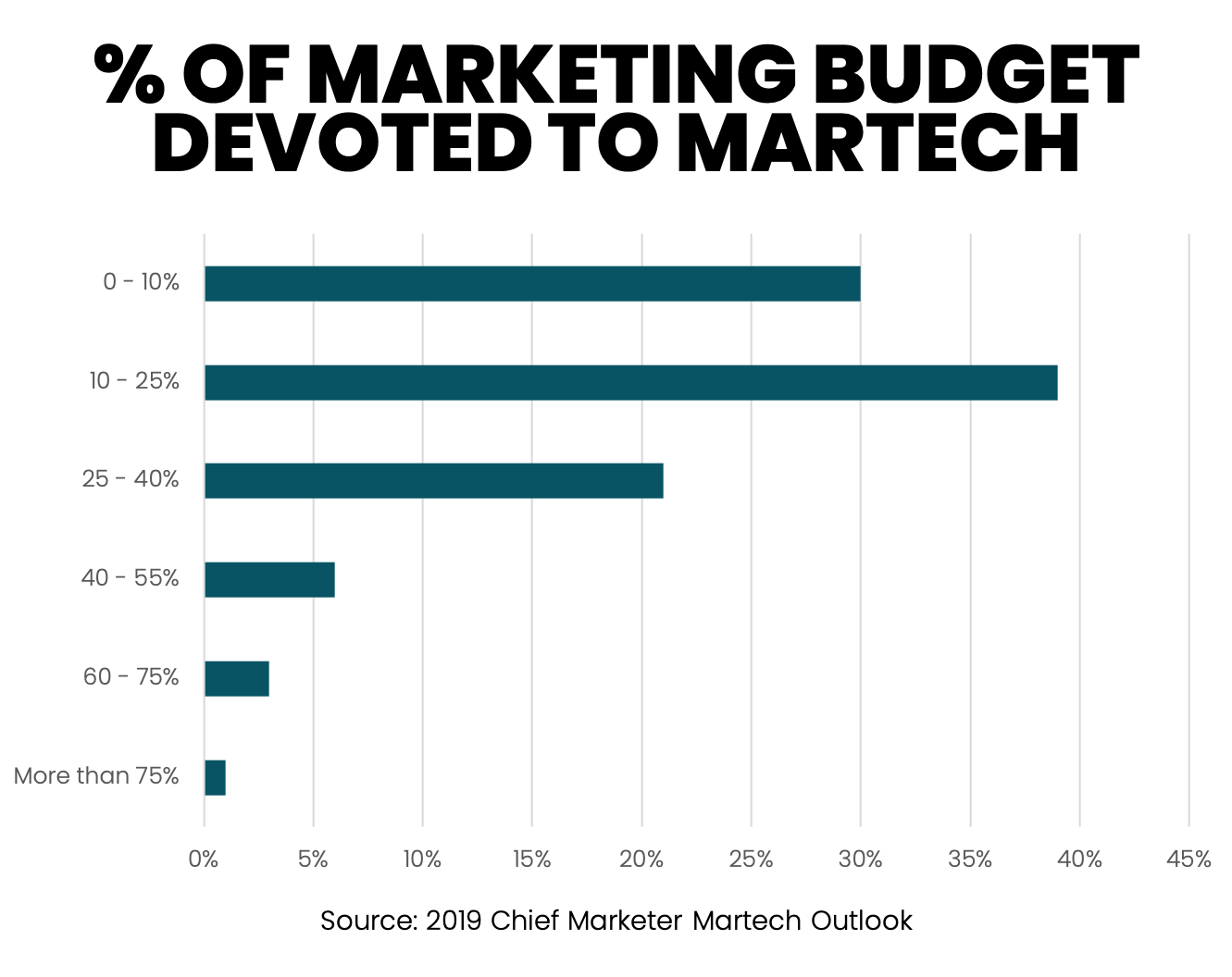5 Tips for Creating a B2B Marketing Tech Stack
by Melanie, on 13 Apr 2021
Odds are that you already have a marketing technology (martech) stack, even if you haven’t conceptualized it that way before reading this.
However, if you’re about to ramp up your marketing efforts, then you should revisit the technology that your marketing team uses to make sure you have the right tech stack to meet your company's needs.
Here are five tips that we recommend you follow to build the best marketing tech stack for your business.
(Note: while these tips will probably be relevant for a B2C company, our focus is on B2B, so our recommendations and examples are focused on that type of business model.)
What is a MarTech Stack?
Let’s start by getting comfortable with the term “tech stack,” which refers to a collection of tools that create one cohesive software system.
An analogy for this could be the digestive system. You have a stomach and a liver, intestines and a gallbladder – and several other organs, too. Together, they make up the digestive system.
In the marketing realm, we can think about the different tools that allow us to perform the marketing function. This may include an email marketing tool, website analytics and reports, chatbots, a CRM, and – again – several other components.
People tend to follow one of two approaches: one loves to geek out on new tools while the other quickly gets overwhelmed.
The first group is constantly trying new software that might better meet their objectives. They (or rather, we, because I’ll put myself into this group) love to talk to colleagues and people in their network about new tools they’re trying. They are not afraid of a big tech stack.
The other camp prefers one tool that “does it all.” You’ll frequently hear them say that the last thing they want is another login to another software program.
What do the stats say?
In 2016, I attended a talk where the speaker presented findings from his study of tech unicorns’ tech stacks. The chart below shows his findings on the average number of technologies by company funding stage:

In late 2019, a survey found that marketing technology budgets continued to rise and that most companies spend somewhere between 10 – 40% of their total marketing budget on martech.
We expect this will have been an even more significant budget item over the last year as sales and marketing have had to function (and succeed) almost entirely on digital channels.


5 Steps to Build a B2B Marketing Tech Stack
So, how do we recommend you approach this? Here is our five step approach:
1 / Know Your Customer. First.
Once you know your customer, then you can build your strategy and plan based on your market knowledge. Then, finally, pick your tech. Tech should be the third step – not the first!
2 / Gather Your List of Requirements.
You may think you have a very clear idea of what you want and need in your stack. But, make sure you are crystal clear on the following:
data architecture
This is especially important when getting into CRMs and marketing automation tools. Not all tools will support the specific structure that you want when it comes to tracking your target customers (companies).
Here are some fundamental questions:
- Do you need parent/child company relationships?
- Can contacts be associated with more than one organization?
- Do you want to track leads, deals, and customers in terms of number of companies or number of contacts?
Where your data lives and where it needs to end up
It is critical that you have one designated, official “database of record.” This is what houses all of the most important pieces of information on your records and objects. If two systems have different data, this is the one you will refer to the "correct" answer.
Because the tech stack, by definition, is build from more than one software tool, spend time evaluating where data will need to go.
Do you need to connect any parts of the marketing and sales system into your accounting or ERP software? What about reporting?
For our clients using HubSpot, you might combine HubSpot dashboards with dashboards in a tool like Databox, which can also pull in data from sources like Google Analytics, Google Search Console, and even QuickBooks.
Thinking this through will help minimize the need for manual and/or duplicate data entry by your team. People hate wasting their time on redundant activities – and data entry in general – so your sales and marketing team will be happier if the system is set up to avoid it.
Integrations
Building on the point above -- where your data lives and where it goes -- you may have other types of integrations to set up. For example, connecting to a specific phone call software or direct mail tool.
What is most valuable is to consider how many integrations are needed with each particular tool and whether they can be made directly or will require a third-party integrator.
Take advantage of direct integrations wherever possible since third-party integrators, such as PieSync or Zapier, add another layer of complexity to your stack.
3 / Plan time to clean up and reorganize your data.
Most people underestimate the time it will take to clean up their data before implementing new tools.
If you don’t already have processes and tools in place to help you stay on top of your data, add them to your tech stack as soon as possible.
For HubSpot clients, take a look at InSycle for help applying database rules.
When migrating data, you might be combining similar records (e.g., contacts) into one place. This might mean different data coming from each place and can lead to the creation of duplicate records.
The clean up effort is well worth the time invested but plan more that you might think depending on the complexity of your current setup.
4 / Choose a tool that will grow with you.
When adding a tool to your tech stack, pick something that will support you through at least the next 18-24 months of your company’s growth.
We’ve watched companies implement and then quickly rip out tools that are expensive and complicated to use but which they outgrew too quickly.
5 / Document.
Keep a log of all the tools to which you have subscribed, why you chose them, and who has access.
Since no software tool is perfect, keeping notes on why you selected each one can come in handy when you’re ripping your hair out because it won’t do something you knew it couldn’t in the first place. Remind yourself of all of the reasons why you decided it was the best and work around the shortcomings.
Keeping a running list of software subscriptions and who has access to them is important for a few reasons:
- It helps you spot and eliminate redundancies in your martech stack
- When an employee leaves, you can remove their access to key tools and change billing and contact information to someone else at the company
- When new employees start, you have a go-to checklist of user credentials to create for them and application-specific training they might need
- It will help you track your martech spend
We also recommend creating a martech blueprint, which is a visual representation of how the tools work together throughout your customer lifetime. For some awesome examples, check out The Stackies.
What Now?
First, you’re going to make sure you know your customer and that you have a strategy and plan in place.
Then, you’re going to list the requirements for your tech stack, keeping in mind data architecture, data storage, and integrations.
You are going to plan for a data review and cleanup while you're selecting the tool(s) that best fit your company’s needs.
Lastly, you are going to write down your rationale for choosing each awesome new tool, add it to your list of software subscriptions, and add it to your martech blueprint.
And, if you have any questions at all, reach out to the Strategic Piece team!
What’s the next tool that you want to add to your tech stack? We’d love to know, so leave us a comment!
OTHER RECOMMENDED POSTS
HubSpot Pricing: Calculating Your Total Cost of Ownership
Database Hygiene: A Very Sexy Topic Indeed
Marketing & Sales Automation: Do's and Don'ts



